
The slender pug is a moth of the family Geometridae. It was first described by Jacob Hübner in 1813 and is found throughout Europe and western parts of the Palearctic. The larva feeds on the catkins of willow.

The square-spot rustic is a moth of the family Noctuidae. It is found in Europe, North Africa and east across the Palearctic and in North America.

The common Quaker is a moth of the family Noctuidae first described by Johan Christian Fabricius in 1775. Some authors prefer the synonym Orthosia stabilis(Denis & Schiffermüller, 1775). It is distributed throughout Europe and is also found in Turkey, Israel, Transcaucasia, Russia and eastern Siberia.

Mythimna impura, the smoky wainscot, is a moth of the family Noctuidae. The species was first described by Jacob Hübner in 1808. It is distributed throughout most of the Palearctic realm from Ireland in the west of Europe east to the Caucasus, Turkey, Syria, Kazakhstan, Russia, Siberia, Mongolia, then Japan. In Europe it is found from the Arctic Circle to Spain and Italy in the south, as well as in the northern regions of Greece.

Coleophora gryphipennella is a moth of the family Coleophoridae. It is found in most of Europe, from Fennoscandia to the Iberian Peninsula and Italy and from Ireland to the Black Sea.

Coleophora spinella, the apple-and-plum casebearer, is a moth of the family Coleophoridae. It is found in Europe, the Near East and North America.
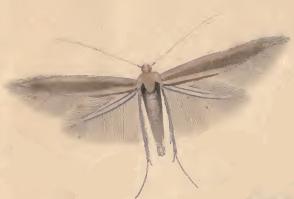
Coleophora lusciniaepennella is a moth of the family Coleophoridae. It is found in most of Europe, except the Iberian Peninsula, the Mediterranean islands and most of the Balkan Peninsula and Russia. It occurs in forest-steppe biotopes.

Prays fraxinella, also known as the ash bud moth, is a moth of the family Plutellidae found in Europe. The larvae are leaf miners, feeding on the leaves and buds of ash trees.
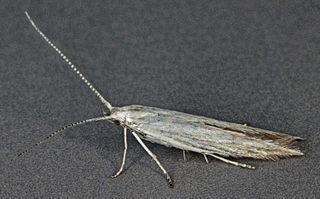
Coleophora striatipennella is a moth of the family Coleophoridae that is found in Europe and Near East. It has been introduced to New Zealand.
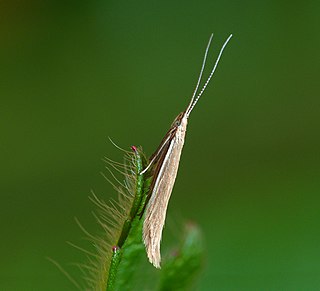
Coleophora glaucicolella is a moth of the family Coleophoridae, found in Asia, Europe and North America. It occurs in forest-steppe biotopes, wet meadows and meadow-steppe.

The testaceous white-back is a moth of the family Coleophoridae. It is found in most of western Europe.

Coleophora siccifolia is a moth of the family Coleophoridae. It is found in most of Europe.

Coleophora adjunctella is a moth of the family Coleophoridae found in Europe.
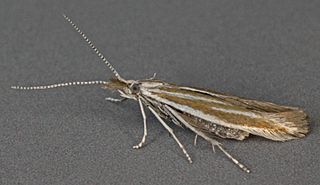
Coleophora pyrrhulipennella is a moth of the family Coleophoridae found in Europe. It was first described by Philipp Christoph Zeller in 1839.
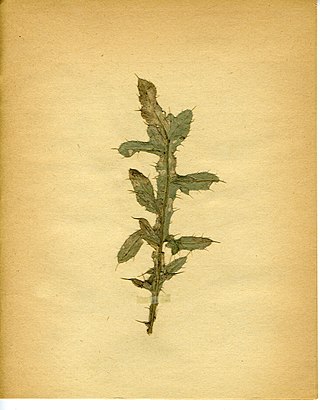
Coleophora therinella is a moth of the family Coleophoridae found in Europe and the East Palearctic.
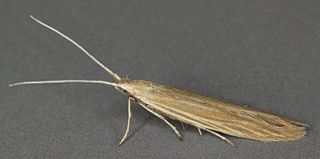
Coleophora tamesis is a moth of the family Coleophoridae found in Asia and Europe.

Coleophora taeniipennella is a moth of the family Coleophoridae. It is found in most of Europe.

Coleophora sylvaticella is a moth of the family Coleophoridae found in Europe.
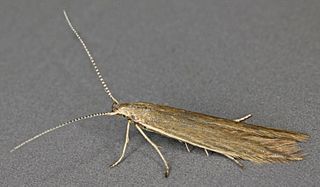
Coleophora alticolella is a moth of the family Coleophoridae, found in Europe and North America.
Coleophora maritimella is a moth of the family Coleophoridae found in Africa and Europe.




















